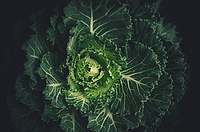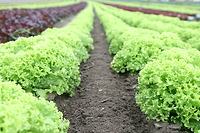As the romaine lettuce growing season is underway again in the Yuma, AZ, growing region, the U.S. Food and Drug Administration (FDA) has issued details from an environmental assessment after the largest outbreak of Escherichia coli O157:H7 the U.S. has seen in 10 years.
The environmental assessment identified the presence of E. coli O157:H7 in three different samples of irrigation canal water that was collected as part of the investigation in the Yuma region. As a result of this finding, FDA “considers that the most likely way the romaine lettuce became contaminated was from the use of water from the irrigation canal, since the outbreak strain was not found in any of the other samples collected in the region.”
FDA is not certain how the water contaminated the lettuce. However, growers and pesticide applicators say that contamination could have occurred via direct application of irrigation canal water to the lettuce crop, or the use of irrigation canal water to dilute crop-protection chemicals applied to the crops through both aerial and land-based spray applications.
FDA says they cannot rule out other ways the lettuce may have become contaminated.
The agency also has no explanation as to when and how the irrigation canal became contaminated with E. coli O157:H7. However, the stretch of irrigation canal where water samples were collected is also adjacent to a large concentrated animal feeding operation (CAFO). FDA says this is one potential source of contamination, but the investigation did not identify an obvious route for contamination of the irrigation canal from this facility. Also, samples collected at the CAFO did not test positive for the E. coli O157:H7 outbreak strain, meaning that FDA cannot exclude other ways the irrigation canal could have become contaminated.
FDA has identified a number of ways that romaine lettuce growers in the Yuma, AZ, growing region can continue to ensure that, going forward, the leafy greens they grow are safe. Some of that advice includes:
- Fully implementing and complying with the Food Safety Modernization Act, particularly the Produce Safety Rule
- Exploring modernized recordkeeping alternatives and doing away with paper and handwritten records--one of the reasons the traceback investigation, in this case, was further complicated
- Adoption of traceability best practices and technologies for quick and easy data access from farm to fork
Going forward, FDA will be collecting and analyzing romaine lettuce samples with the help of a new surveillance sampling assignment for contamination with human pathogens. This will help the agency to determine whether products are safe to enter the U.S. marketplace. If samples are found to be contaminated, the FDA will follow-up with fresh-cut leafy greens processors and their growers or suppliers to determine if these foods were produced under unsanitary conditions that render them harmful to consumers and take the appropriate action to remove them from the market.
More on the romaine lettuce E. coli outbreak
?Romaine Lettuce Outbreak: FDA Identifies Cattle Operation Near Contaminated Canal Water
Yuma Region Environmental Samples Test Positive for E. coli
Five Deaths in Romaine Lettuce E. coli Outbreak
FDA Shares Traceback Details for Romaine Lettuce E. coli Outbreak as Investigation Continues
Leafy Greens Industry Forms Task Force in Light of Romaine Lettuce Outbreak
Sign up for Food Safety Magazine’s bi-weekly emails!
Subscribe to our podcast: Food Safety Matters!




